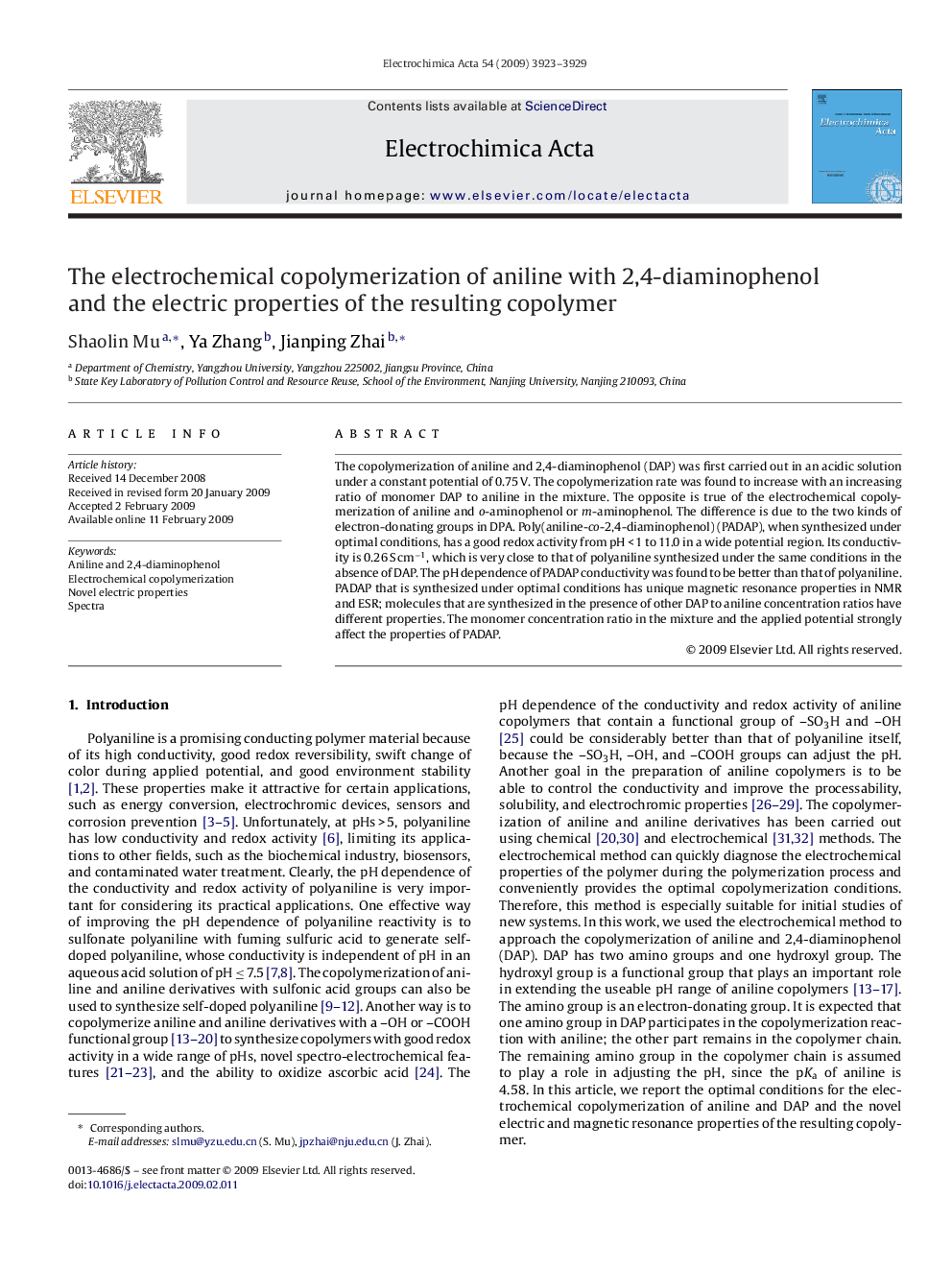| Article ID | Journal | Published Year | Pages | File Type |
|---|---|---|---|---|
| 193818 | Electrochimica Acta | 2009 | 7 Pages |
The copolymerization of aniline and 2,4-diaminophenol (DAP) was first carried out in an acidic solution under a constant potential of 0.75 V. The copolymerization rate was found to increase with an increasing ratio of monomer DAP to aniline in the mixture. The opposite is true of the electrochemical copolymerization of aniline and o-aminophenol or m-aminophenol. The difference is due to the two kinds of electron-donating groups in DPA. Poly(aniline-co-2,4-diaminophenol) (PADAP), when synthesized under optimal conditions, has a good redox activity from pH < 1 to 11.0 in a wide potential region. Its conductivity is 0.26 S cm−1, which is very close to that of polyaniline synthesized under the same conditions in the absence of DAP. The pH dependence of PADAP conductivity was found to be better than that of polyaniline. PADAP that is synthesized under optimal conditions has unique magnetic resonance properties in NMR and ESR; molecules that are synthesized in the presence of other DAP to aniline concentration ratios have different properties. The monomer concentration ratio in the mixture and the applied potential strongly affect the properties of PADAP.
